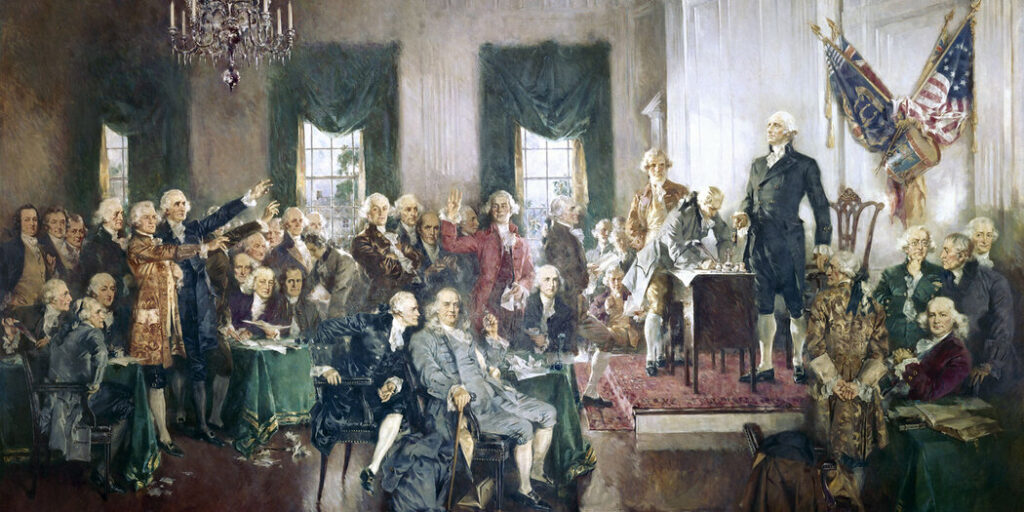
In the US, the creation and requirement of criminal regulations are not exclusively a government obligation. All things being equal, a critical part of these regulations are created and carried out by individual state legislatures.
This article investigates the perplexing elements of state legislatures assuming a key part in making most of criminal regulations.
By understanding the purposes for this division of regulative power, we can more readily grasp the ramifications of this decentralization and its significant effect on the law enforcement framework in the US.
The Division of Regulative Power:

The US Constitution, in its establishment, sets up a government arrangement of administration, obviously recognizing the division of abilities between the bureaucratic and state elements. While the central government has identified abilities, the 10th Amendment unequivocally saves all powers not explicitly conceded to the national government to the states. This protected system gives state legislatures the position to enact on different issues, including criminal regulation, bringing about a different and complex lawful scene the country over.
Explanations for State Legislatures Creating Criminal Regulations:

-Explanations for State Legislatures Creating Criminal Regulations:
Federalism, a vital guideline of the U.S. Constitution, works on the possibility that states act as labs of a majority rule government. Permitting state legislatures to enact criminal matters empowers them to fit regulations to meet explicit territorial requirements, values, and difficulties. This mirrors the composers’ obligation to decentralization as well as recognizes that states are more qualified to grasp the exceptional subtleties of their networks.
One of a kind Sociodemographic Variables:
The US is a different country with an extensive variety of sociodemographic factors. State legislatures, being nearer to their constituents, are interestingly situated to comprehend and answer the remarkable requirements of their populaces. This closeness cultivates a more cozy comprehension of territorial issues, permitting state councils to make criminal regulations that resound with nearby networks.
Adaptability and Responsiveness:
The decentralized idea of state legislatures permits them to adjust rapidly to changing cultural standards and arising difficulties. State councils can try different things with, correct, or repeal criminal regulations more effectively than a unified government body. This adaptability guarantees that the legitimate system stays receptive to the developing elements inside each state.
Fitting Punishments to Neighborhood Settings:
States have the watchfulness to change criminal punishments to suit their particular conditions. This fitting of punishments considers a more nuanced way to deal with equity, recognizing that a one-size-fits-all model may not be reasonable for the different cluster of networks that make up the US. By taking into account neighborhood settings, states can all the more likely locate the underlying drivers of wrongdoing and recovery needs.
Local area Policing and Neighborhood Cooperation:
State legislatures, being nearer to the grassroots level, can work with compelling local area policing drives. By including nearby policing and networks in the regulative cycle, states can make regulations that line up with local area values and encourage coordinated effort among residents and policing. This people group arranged approach upgrades trust in the law enforcement framework.
Tending to Exceptional Provincial Needs:
State governing bodies have the position to focus on specific offenses in light of the particular requirements of their locales. For example, states with critical agrarian ventures might establish regulations tending to provincial wrongdoings, while metropolitan regions might zero in on regulation focusing on cybercrimes or middle class offenses. This designated prioritization permits states to effectively apportion assets.
Social Responsiveness and Supportive Equity:
The social texture of each state contrasts, and state legislatures can implant social awareness into criminal regulation. This might appear in helpful equity rehearses that underline compromise among wrongdoers and casualties, lining up with neighborhood upsides of absolution and local area reclamation.
Ramifications of State-Driven Criminal Regulation:

-Different Legitimate Scenes:
The decentralization of criminal regulation prompts the making of different legitimate scenes the country over. States have the opportunity to shape their own crook codes, prompting critical varieties in definitions, punishments, and methods.
Imaginative Methodologies and Strategy Trial and error:
The state-driven approach considers strategy trial and error and advancement. States can act as proving grounds for new law enforcement draws near, with effective techniques possibly impacting strategies in different purviews.
Fitted Reactions to Provincial Difficulties:
Territorial varieties in crime percentages, financial circumstances, and social elements require tailor-made reactions. State legislatures, sensitive to these subtleties, can make criminal regulations that straightforwardly address the special difficulties looked by their networks.
End:
The portion of power to state legislatures in forming criminal regulation isn’t simply a protected show however a conscious and crucial part of the U.S. general set of laws. This decentralization guarantees that the law enforcement structure stays versatile, responsive, and customized to the assorted necessities of the American people group. While difficulties, for example, lawful disparity and irregularities might emerge, the advantages of state-driven criminal regulation far offset the disadvantages, making a framework that mirrors the pluralistic and dynamic nature of the US.